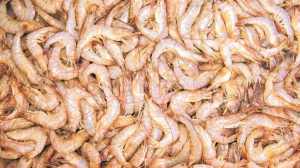Jay Mazoomdaar is an investigative reporter focused on offshore finance, equitable growth, natural resources management and biodiversity conservation. Over two decades, his work has been recognised by the International Press Institute, the Ramnath Goenka Foundation, the Commonwealth Press Union, the Prem Bhatia Memorial Trust, the Asian College of Journalism etc. Mazoomdaar’s major investigations include the extirpation of tigers in Sariska, global offshore probes such as Panama Papers, Robert Vadra’s land deals in Rajasthan, India’s dubious forest cover data, Vyapam deaths in Madhya Pradesh, mega projects flouting clearance conditions, Nitin Gadkari’s link to e-rickshaws, India shifting stand on ivory ban to fly in African cheetahs, the loss of indigenous cow breeds, the hydel rush in Arunachal Pradesh, land mafias inside Corbett, the JDY financial inclusion scheme, an iron ore heist in Odisha, highways expansion through the Kanha-Pench landscape etc. ... Read More
One CBM that they hadn’t factored: LoC ceasefire brings back the mountain goats
The human cost of the conflict might have forced the Indo-Pak ceasefire along the LoC but the ensuing thaw has seen unusual beneficiaries. F...

The human cost of the conflict might have forced the Indo-Pak ceasefire along the LoC but the ensuing thaw has seen unusual beneficiaries. For one, the enigmatic corkscrew-horned Markhors have made a comeback from the brink of extinction.
A first-of-its-kind survey along the LoC has recently spotted 35 small herds of this majestic mountain goat, feared extinct in India since the late ’90s. The Markhor population on this side of LoC dropped drastically from an estimated 25,000 in 1970. In 1997, TJ Roberts reported in his Mammals of Pakistan that Markhor in Pir Panjal have been practically exterminated, mainly due to border conflicts.
The Wildlife Trust of India (WTI), Nature Conservation Society, Mysore, the Jammu and Kashmir wildlife department and the environment and ecology cell of the Indian Army jointly conducted the ‘‘silent drive count’’ of Pir Panjal Markhors over three months during 2004-05. The team has recently submitted its report to the state government.
In all, 155 animals were sighted in the two survey blocks of Kaj-i-Nag and Hirpura and a population of 280-330 is estimated in the entire range including Poonch and Boniyar.
The survey, however, couldn’t find any presence of Markhor in other potential blocks like Shamshabari and Gulmarg.
‘‘It is really encouraging that we still have a sizeable Markhor population here. The present peace situation is conducive for wildlife. Regular cross-border firing and shelling was a serious threat. But the habitation was improving even before the ceasefire was announced in late 2003. We declared protected areas and were hopeful that the Markhor population would improve,’’ J&K Chief Wildlife Warden CM Seth told The Indian Express.
J&K Principal Chief Conservator of Forests SD Swatantra also lauded the Army for its role.
‘‘Army personnel have been sensitive to the environmental concerns. Border thaw during the last two years has helped the animals a lot. Earlier, constant presence of the troops minimised poaching and human interference. Now in the absence of conflict, the habitat is improving fast,’’ he said.
The Markhor is critically endangered as per the International Union for Convention of Nature and Natural Flora and Fauna (IUCN) Red List. In India, it is included in the Schedule I of the Wildlife (Protection) Act 1972 and Kashmir Wildlife (Protection) Act 1978. But rampant poaching continued, thanks to easily available sophisticated arms in the conflict-ridden state.
Markhor horns are in demand for traditional Asian medicine. In China, horns are reportedly sold at $1000 per kg. One of the most desired hunting trophies, a pair of cork-screw horns — with its record length exceeding 5 feet — can fetch up to $1500 in the international market.
These apart, for many in Kashmir, Markhor meat has been the most preferred bush protein. Consequently, the animals became extremely rare in the mid-’90s. In last few years, except for rare departmental claims, there was no definite proof of the presence of Pir Panjal Markhors in India.
Now with confirmed reports of several small herds this side of the LoC, the Markhor map extends from the mountains north of the Amur Darya River in Turkmenistan, east through Afghanistan and Pakistan, into the extreme northwestern part of India.
The joint survey highlighted factors like poaching, over-grazing and constant border conflict as the major threats to Markhor population.
Pointing out that Hirapura sanctuary and Kaj-i-Nag national park are ‘‘the potential source populations for conservation and restocking’’ of Markhor in the rest of its range, the report sought merger of Lachipora sanctuary and Naganari conservation area with Kaj-i-Nag and form a single unit for collaborative management with the help of the Army. To check livestock grazing, encroachment and poaching, it stressed the need for capacity building of the wildlife department in terms of manpower, resources and training.
‘‘We will chalk up an action plan in consultation with the Union ministry to effectively manage the Markhor ranges. We will also take whatever help possible from the Army. The state government is keen to protect these majestic goats which are a part of Kashmir’s identity,’’ Seth said.
|
MYTHS AND MARKHORS
|
||||
|
Largest in the goat family, a male Markhor can weigh up to 110 kgs and stands 180 cms at the shoulder. The name Markhor is derived from the Persian mar, a snake, and khor, eating. This is a very peculiar name, as these goats are vegetarians. However, in local myths, Markhors are believed to kill snakes by trampling on them. However, the name is possibly an allusion to the animal’s snake-like horns. |
||||






- 01
- 02
- 03
- 04
- 05


























